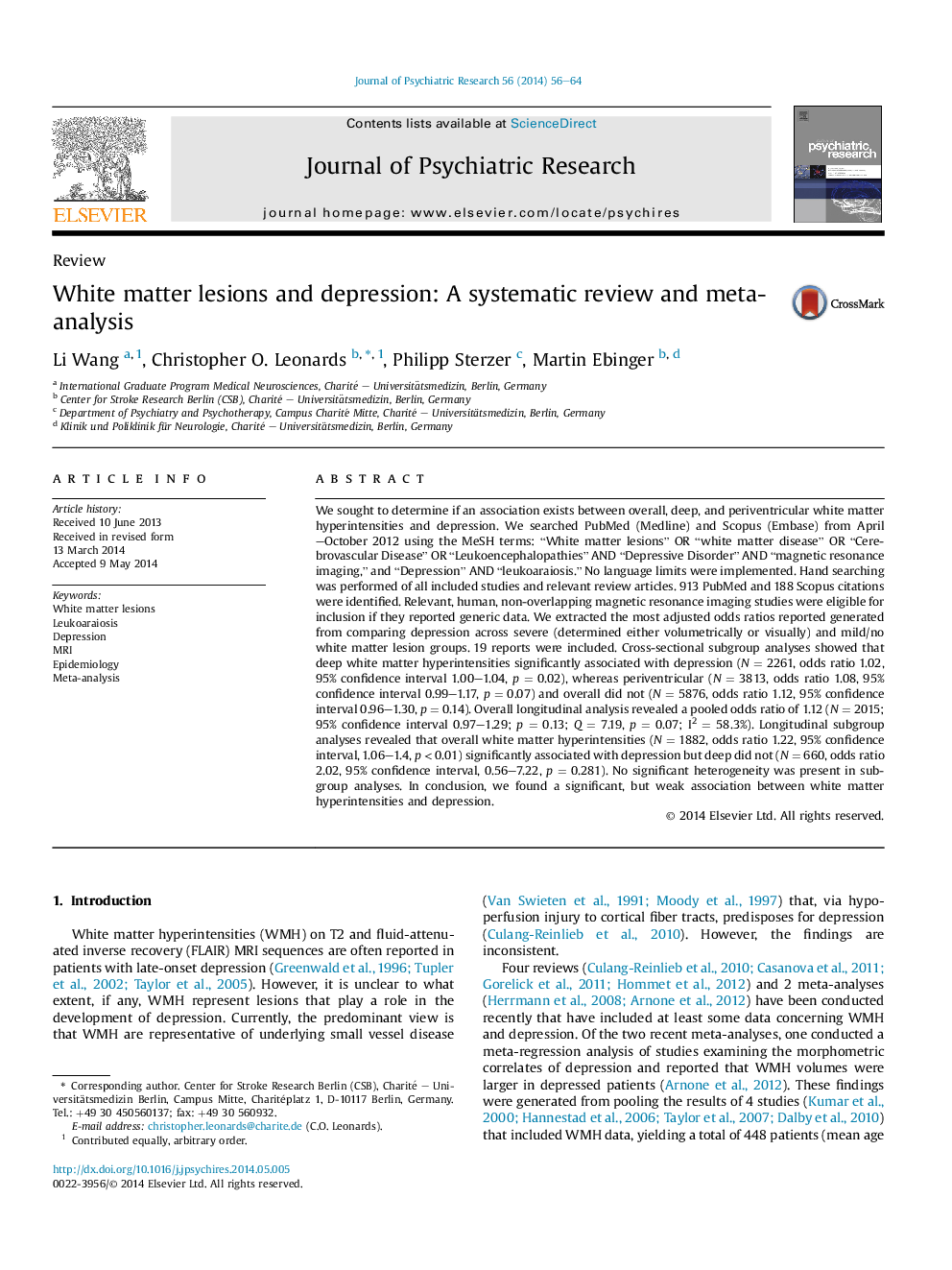| کد مقاله | کد نشریه | سال انتشار | مقاله انگلیسی | نسخه تمام متن |
|---|---|---|---|---|
| 326984 | 542678 | 2014 | 9 صفحه PDF | دانلود رایگان |
We sought to determine if an association exists between overall, deep, and periventricular white matter hyperintensities and depression. We searched PubMed (Medline) and Scopus (Embase) from April–October 2012 using the MeSH terms: “White matter lesions” OR “white matter disease” OR “Cerebrovascular Disease” OR “Leukoencephalopathies” AND “Depressive Disorder” AND “magnetic resonance imaging,” and “Depression” AND “leukoaraiosis.” No language limits were implemented. Hand searching was performed of all included studies and relevant review articles. 913 PubMed and 188 Scopus citations were identified. Relevant, human, non-overlapping magnetic resonance imaging studies were eligible for inclusion if they reported generic data. We extracted the most adjusted odds ratios reported generated from comparing depression across severe (determined either volumetrically or visually) and mild/no white matter lesion groups. 19 reports were included. Cross-sectional subgroup analyses showed that deep white matter hyperintensities significantly associated with depression (N = 2261, odds ratio 1.02, 95% confidence interval 1.00–1.04, p = 0.02), whereas periventricular (N = 3813, odds ratio 1.08, 95% confidence interval 0.99–1.17, p = 0.07) and overall did not (N = 5876, odds ratio 1.12, 95% confidence interval 0.96–1.30, p = 0.14). Overall longitudinal analysis revealed a pooled odds ratio of 1.12 (N = 2015; 95% confidence interval 0.97–1.29; p = 0.13; Q = 7.19, p = 0.07; I2 = 58.3%). Longitudinal subgroup analyses revealed that overall white matter hyperintensities (N = 1882, odds ratio 1.22, 95% confidence interval, 1.06–1.4, p < 0.01) significantly associated with depression but deep did not (N = 660, odds ratio 2.02, 95% confidence interval, 0.56–7.22, p = 0.281). No significant heterogeneity was present in subgroup analyses. In conclusion, we found a significant, but weak association between white matter hyperintensities and depression.
Journal: Journal of Psychiatric Research - Volume 56, September 2014, Pages 56–64
